Thomas Baumann
Balancing the Wrong and the True…
5.4. —
4.6.2008
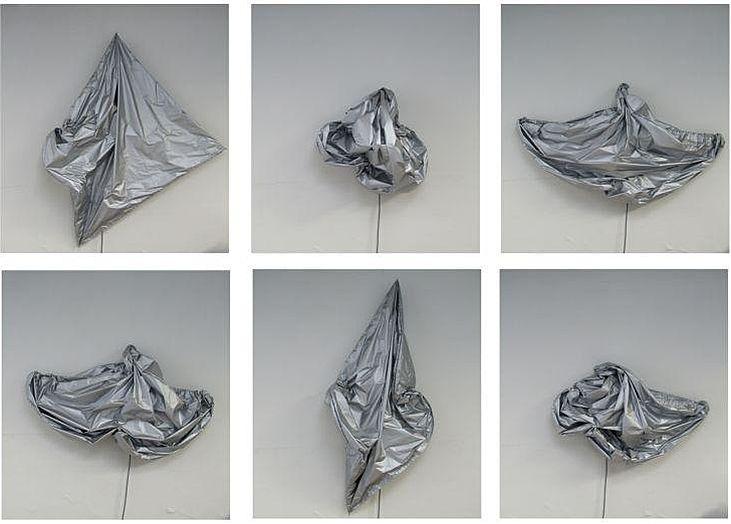
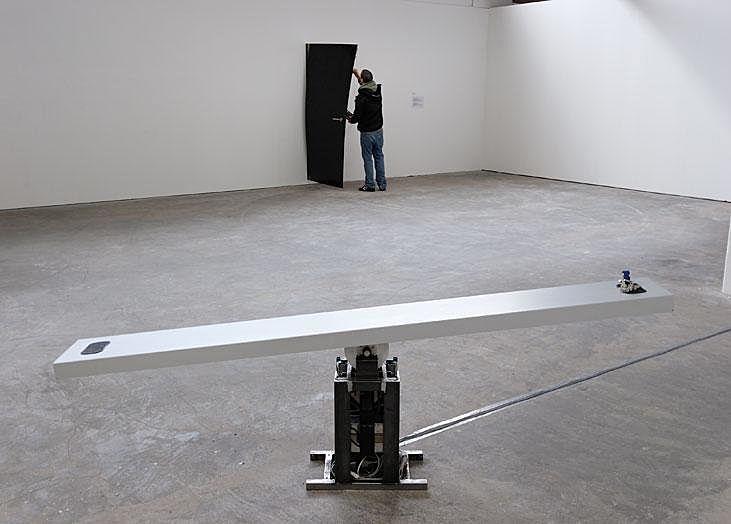
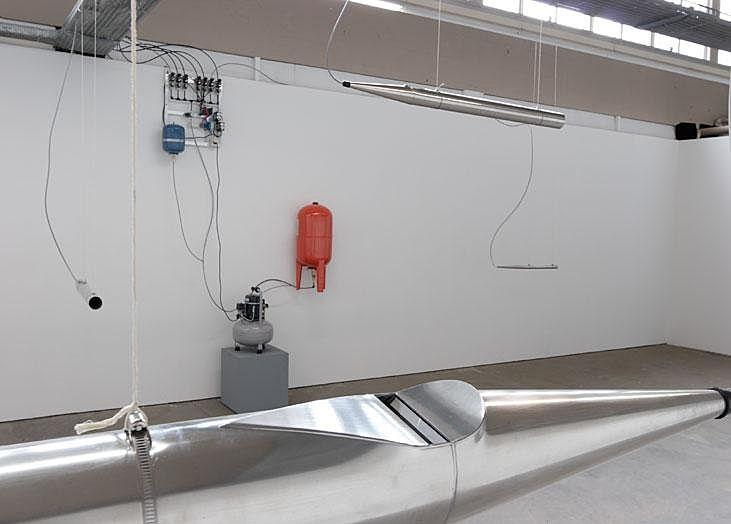
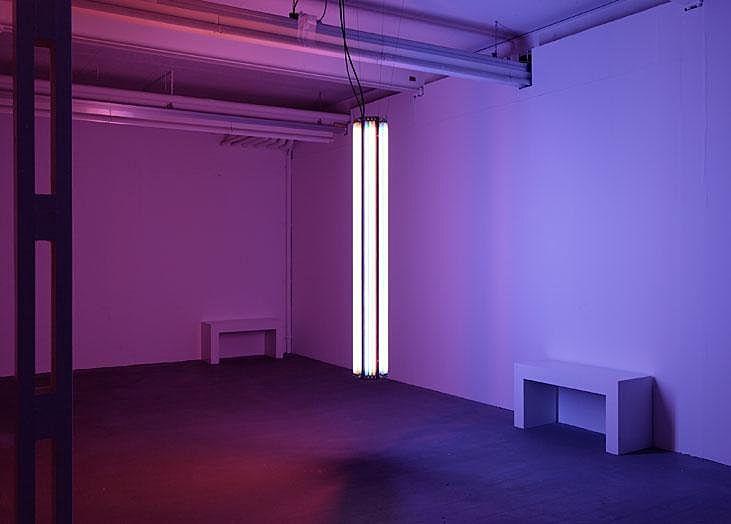
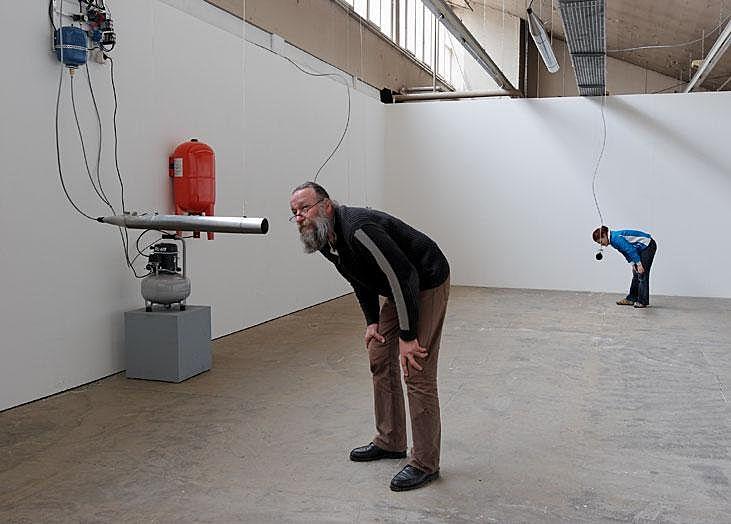
In his oeuvre, Thomas Baumann (born in 1967 in Salzburg, lives in Vienna) blends art categories and challenges values as well as systems of values and forms. With his electronic sculptures, machine-produced paintings, films, and installations providing visitors with their own sphere of action, Baumann looks for the structural connections between material and mental spaces.
Balancing the wrong and the true… is the artist’s first solo show in Switzerland. Baumann’s works have been widely exhibited, for example in the Museum of Modern Art in Passau and at Secession Vienna, and he has also taken part in many group shows, including Museum Tinguely, Kunsthaus Graz, and Haus Konstruktiv, Zurich.
One of his spatial sculptures with pre-programmed scores is Asilver (1999/2008). A silver foil moves in a certain rhythm. It opens, contracts, and expands. The sculpture changes its shape permanently — it destroys the shape it has just taken on to generate a new one. Shape’n Shade for a Black and White Rope (2005), in contrast, consists of a black and a white rope that are electronically controlled to change their geometric composition and color. This work is reminiscent of abstract geometric painting, and of intentions to ensure equal living conditions for people regardless of their skin color.
Judging from its outward appearance, the installation Beam Statement (2007) could be interpreted as a swing. However, in contrast to a regular swing in which the heavier weight is pulled down and the lighter weight is lifted, Beam statement pretends that whatever is placed on this swing is brought into a state of equilibrium. Symbolically speaking, the work seems to balance out everything. Thomas Baumann addresses social and economic value systems and suggests that we seriously reconsider them.
Some of the works featured in the exhibition involve acoustic elements. Play the Door of Psycho (1998/2005) is shaped like a door, but it is a door on which we can “play” by turning up the amplifier and plucking the strings. An everyday object is placed in a different context and turned into an instrument. The installation/setting entitled Pas Trop (1993) consists of iron rings cut through at one point. While this appears to be a mistake, it does allow recipients to move the elements and to make the end parts clash. This produces a deafening noise that is heard throughout the exhibition venue as a sign of recognition and communication. The rings change their position and generate random noise. The most recent work entitled Das taktlose Stück (The Bar-less Piece, working title, 2008) is the product of a collaborative effort with Viennese pianist and conductor Michael Klaar. Beethoven’s pianoforte sonata served as the starting material. In one passage of the sonata, Beethoven decided to do without bar lines and subsequently added two notes. These two interventions allow for an experimental approach to the composition. Although Beethoven never composed organ music, Baumann uses organ pipes that, based on an electronic score, interpret the “bar-less passage” as well as the two subsequently added notes. Similarly, A Light Carpet Roller (2006/2008) follows an electronic score that mixes the colors of the RGB color model in a computer-controlled manner, so that new and constantly changed color spaces emerge.
A new work involving ropes, placed on the floor of the exhibition area, allows visitors to experience the work both sensually and haptically. Once you have taken off your shoes, you can run along the rope-marked lanes, like a balancing act or a Kneipp-inspired water massage. A video called KEI.L.E. (1991) close by shows how the visitors of another exhibition ran on iron wedges. Here, Thomas Baumann made something vaguely resembling a floor sculpture that turns a walk-on sculpture by Carl André into a balancing act. Compared to Beam statement, this new work is not just about symbolically finding a delicate balance, but about a personal contribution to sustaining it. In line with a new outlook on viewer interactivity and perception, Thomas Baumann involves recipients directly in his work.
Text by Sabine Schaschl